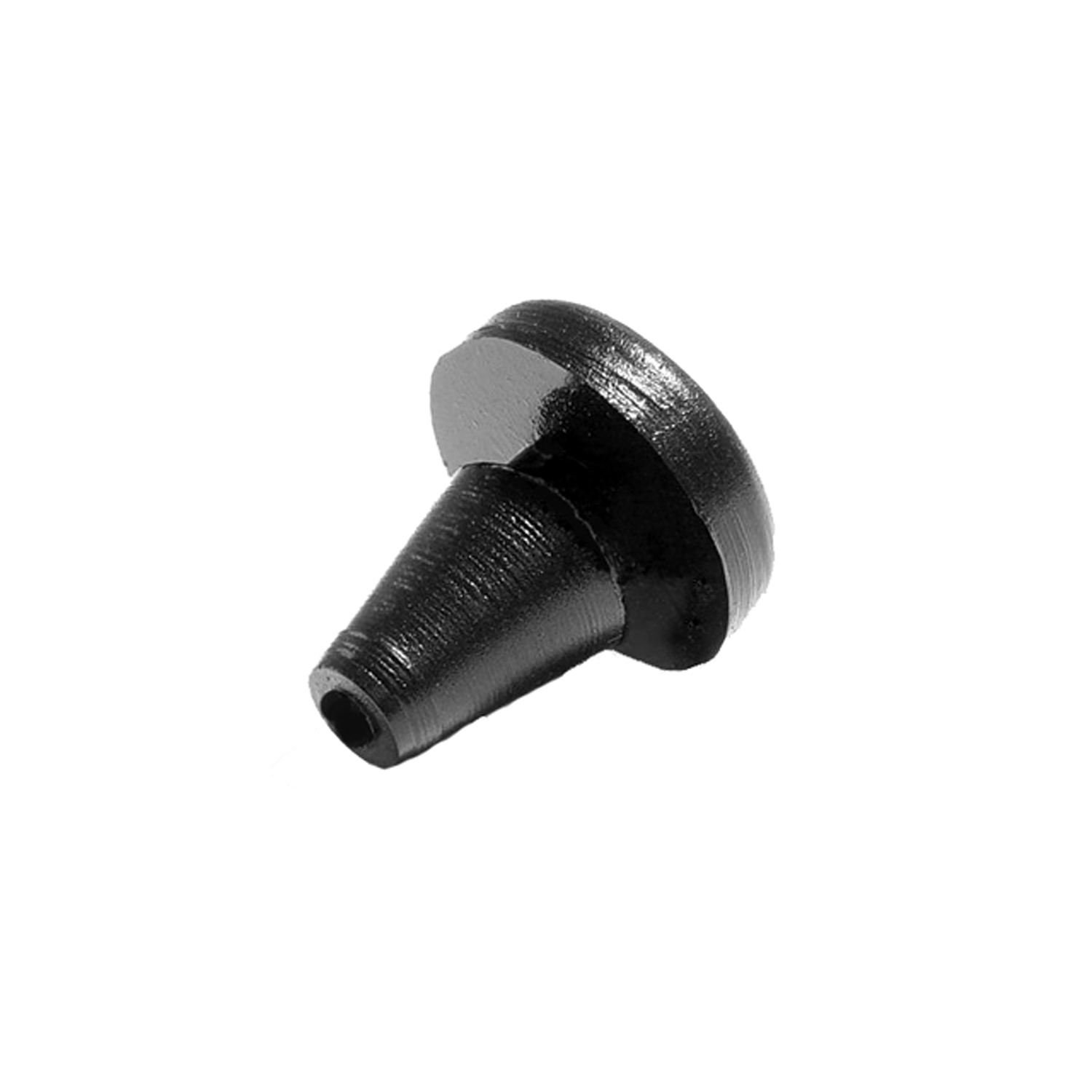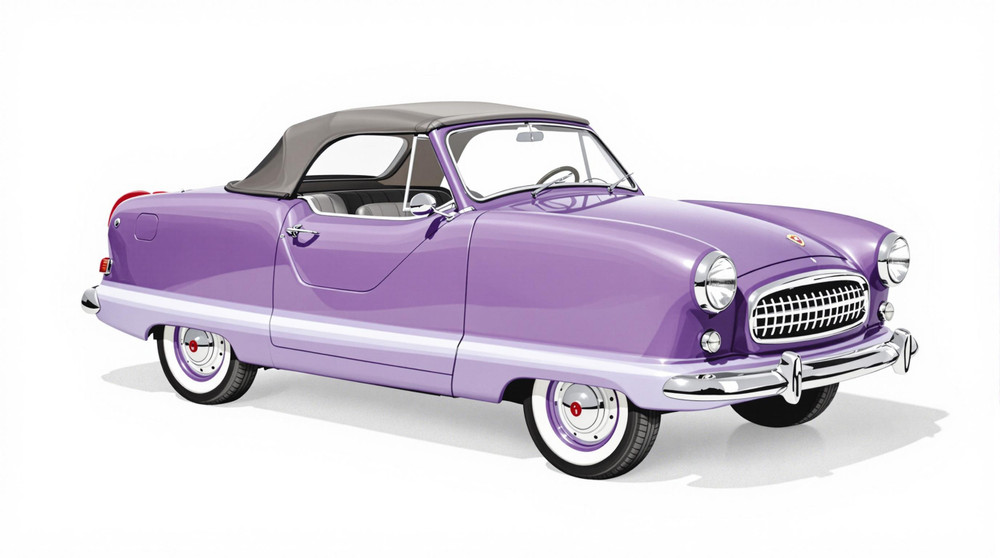Image of 1957 Metropolitan Series B, Note: These illustrations use artistic license and may differ from actual historical models.
Performance Metrics
Fundamental Metrics
Emotional Appeal
MMP Rating
| Engine Specifications | |
|---|---|
| Engine: | 1.5L Austin A-Series I4 |
| Displacement: | 1.5L (1489 cc) |
| Horsepower: | 52 hp at 4,500 rpm |
| Torque: | 77 lb-ft at 2,400 rpm |
| Compression Ratio: | 8.3:1 |
| Ignition System: | Distributor and coil |
| Cooling System: | Water-cooled |
| Performance Specifications | |
| 0-60 Time: | 19.3 seconds |
| 1/4 Mile Time: | 21.5 seconds |
| Top Speed: | 77 mph |
| Transmission and Drive | |
| Drive Type: | RWD (Rear Wheel Drive) |
| Transmission Type: | 3-speed manual |
| Fuel and Efficiency | |
| Fuel System Type: | Single SU carburetor |
| MPG: | 30-35 mpg |
| Dimensions and Brakes | |
| Brakes: | Hydraulic drum brakes on all four wheels |
| Wheelbase: | 85 in (2,159 mm) |
| Weight: | 1,785 lb (810 kg) |
Note: Specifications for classic cars are given to the best of our ability, considering the limited and variant data available.
Unveiling the Charm of the 1957 Metropolitan Series B
The 1957 Metropolitan Series B is a car that encapsulates the optimism of post-war America with its distinctive styling and compact dimensions. Born from a partnership between Nash-Kelvinator Corporation and the British Motor Corporation, this pint-sized classic was designed to be an economical second car for American families. Its historical significance lies in its role as a pioneer of subcompact cars in the United States, long before the term was even coined. A notable moment in its history was when it became a darling of urbanites who prized its ability to navigate crowded city streets with ease.
Design and Innovation
The Metropolitan's exterior styling is nothing short of iconic, with its two-tone paint job, "continental" rear-mounted spare tire, and charming chrome accents. The Series B models featured a revised grille and hood, enhancing its already cheerful front fascia. Inside, occupants were treated to a surprisingly roomy cabin given the car's exterior dimensions, with seats upholstered in stylish patterns and durable materials. Technological features included innovations like its unitized body construction, which was ahead of its time for American-designed vehicles. Color options ranged from Sunburst Yellow to Berkshire Green, with Autumn Yellow and Spruce Green being among the popular choices. The most iconic body style was undoubtedly the hardtop coupe, which exuded a sense of sportiness uncommon in compact cars of that era.
Historical Significance
The 1957 Metropolitan's impact on automotive design was profound; it challenged the prevailing trend of 'bigger is better' in American cars and foreshadowed an era where efficiency would become paramount. Its unique position as an American-designed but British-built car set it apart from contemporaries and left a lasting influence on international automotive collaborations.
Performance and Handling
Underneath its quirky exterior, the 1957 Metropolitan Series B housed a 1.5-liter inline-four engine that delivered modest performance figures by today's standards but was adequate for the era's urban driving. Top speed hovered around 75 mph, with acceleration from 0-60 mph taking around 19 seconds. The ride was firm yet compliant enough to handle urban potholes and undulations with aplomb. Drivers often reported a sense of connection to the road through the thin-rimmed steering wheel and mechanical feedback that modern vehicles have largely insulated away.
Ownership Experience
The Metropolitan found its niche as an urban runabout rather than a long-distance cruiser or show car. Owners appreciated its simplicity, which translated into ease of maintenance and repairability—even for those with limited mechanical skills. While reliability was generally good for well-maintained examples, parts availability has become more challenging over time.
Fun Facts
A few fun facts about this diminutive classic include its cameo appearances in various films and TV shows, adding to its pop culture credentials. While not known for setting speed records, it did achieve a sales milestone by becoming one of America's first widely accepted subcompact cars. Common criticisms at the time included its modest power output and cramped rear seating—though these are often overlooked today by enthusiasts who cherish its unique character.
Collector's Information
Today, the 1957 Metropolitan Series B holds a special place in collector circles. With approximately 22,000 units produced during that year across all body styles, it's relatively rare but not impossible to find. Values have steadily appreciated over time as nostalgia for this era of automotive history grows stronger. Pristine examples can fetch anywhere from $10,000 to $20,000 depending on provenance and condition.
Conclusion
The 1957 Metropolitan Series B stands as a testament to innovation during an era when America was redefining itself. It remains an endearing symbol of mid-century design and forward-thinking engineering—a true classic that continues to capture hearts more than six decades after it first hit the streets.
1957 Metropolitan Series B Catalog of Parts
 1957 Metropolitan Series B Hood Side Bumper. 5/8" O.D.,5/8" High. Each-SB 11Hood Side Bumper. 5/8" O.D.,5/8" High. Each
1957 Metropolitan Series B Hood Side Bumper. 5/8" O.D.,5/8" High. Each-SB 11Hood Side Bumper. 5/8" O.D.,5/8" High. EachWhy Choose Metro?
For over 100 years, Metro Moulded Parts has been the pinnacle of quality in classic car restoration parts. Our commitment to precision and authenticity in every component ensures a perfect fit and an OEM-level appearance.
- Expert Craftsmanship & Quality: Each part is a testament to our dedication to reliability and perfection, crafted from original designs and thoroughly tested.
- Advanced Technology: We use cutting-edge techniques to create flawless, long-lasting parts that surpass others in performance.
- SuperSoft Sponge – The Ultimate Door Seal: Not only are our door seals 30% softer than competitors', but they're also guaranteed to never leak. They effectively reduce wind and road noise, enhancing your classic car's comfort and driving experience.
- Proudly American: Our parts are a product of American craftsmanship, made in the USA with a spirit of excellence and heritage.
- Unrivaled Warranty: We back our products with a 30-year industry-leading warranty, a testament to our confidence in their quality.
Join us in preserving the legacy of classic cars with parts that are crafted for perfection, not just made.

